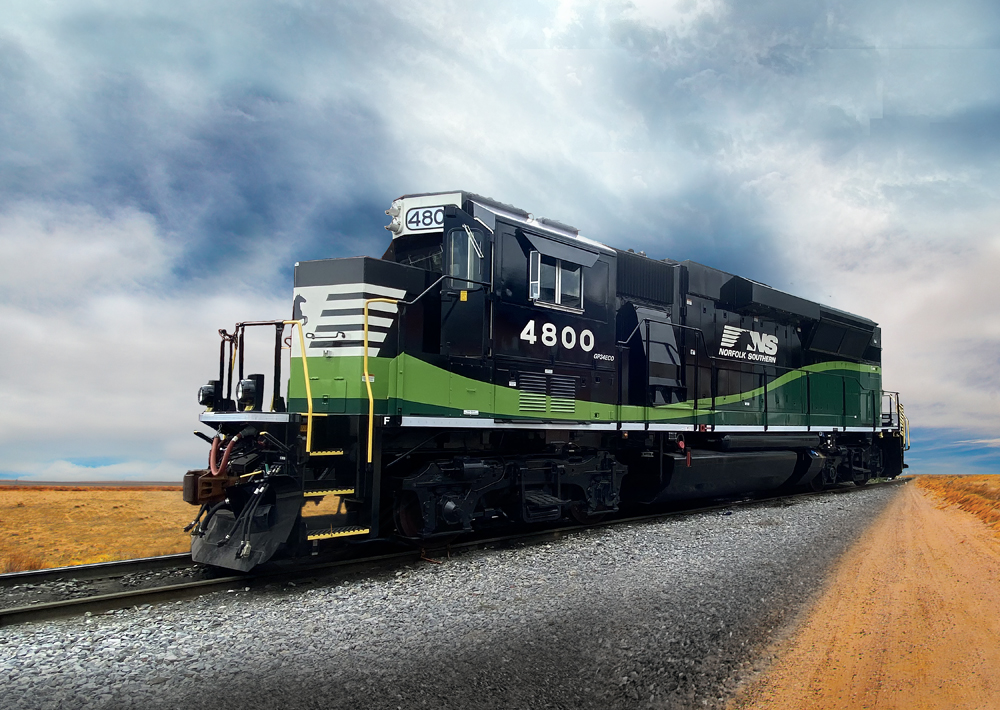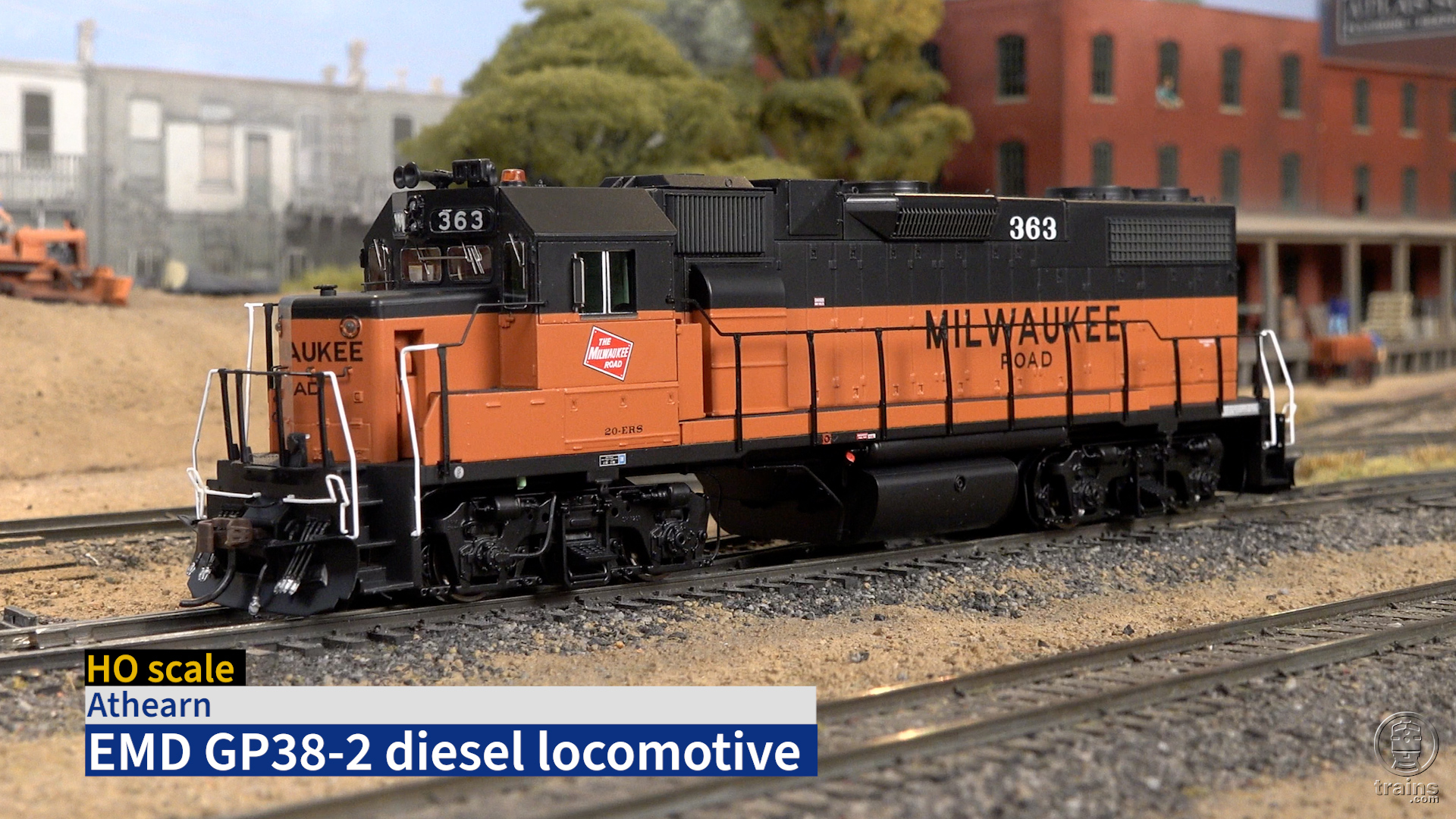
Progress Rail and Norfolk Southern have unveiled the first GP34ECO locomotive, built for yard and intermediate operations to meet Environmental Protection Agency Tier 4 emission standards.
The locomotive, intended to reduce nitrogen oxide emissions by 90% compared to older locomotives, is currently undergoing testing for EPA certification. It is powered by a 3,000-hp 12-710 EMD engine and is the first to use a diesel exhaust fluid/selective catalytic reduction aftertreatment system for line-haul locomotive applications.
Norfolk Southern assembled the locomotive core at its Juniata Locomotive Shop in Altoona, Pa., and worked with Progress Rail and Caterpillar on final assembly, engine, and aftertreatment system work. It also features a new crashworthy cab and new cab electronics.
“In recent years, we have collaborated with Progress Rail to upgrade more than 100 locomotives that power our road and terminal operations,” Tom Schnautz, Norfolk Southern vice president of Advanced Train Control, said in a press release. “This new locomotive is another step forward in our modernization journey, and we look forward to achieving Tier 4 emissions certification.”
Since 2008, Norfolk Southern and Progress Rail have repowered 50 locomotives specifically for the ECO line. The units offer lower emissions, fuel savings, and other efficiencies, and each and replace two older, less-efficient locomotives.
The unit will be placed in service in Harrisburg, Pa., later this year, with NS and Progress working to ensure field testing meets final emissions certification requirements.













DEF is universally despised by truckers. An exceptionally small amount spilled into fuel can destroy an engine, it’s expensive, and in many cases it LOWERS fuel economy.
I know many independent truckers who delete the system as soon as their warranties expire and they can pay the $5000 to have it removed. That pays for itself within 20k miles from not having to pay for the highly-corrosive additive, as well as the added mileage they get.
No mention in the article as to which older loco provided the core body and chassis for this project. Most likely a GP38 or 40. Would love to see a Trians article on loco rebuilds, from dash 3s with updated controls to AC rebuilds and SD90 refurbishing.
Core was NS GP59 4630
Both the then GE Transportation and EMD failed their customers by not announcing discountinuance of locomotive production for domestic sale when EPA’s extortion was first announced with proposed these standards. Had they dfone so, the Feds might’ve eventually come to trheir senses. Few have accounted for the additional costs imposed on priovate industry by these burdens.
It’s a little hard to know what the cab really looks like due to the way that image has been photoshopped.
The new crash worthy cab looks similar to the cabs of the 2nd generation EMD GP and SD road switchers of old. The so-called comfort cabs with full width noses make the latest road switchers currently in service look like oversized highway truck tractors from the front.
I remember reading somewhere that PR stated that the EMD 710 Engine couldn’t successfully be upgraded to Tier 4 standards but looks like using DEF & SCR it likely can. Looks like good things are coming from Progress Rail soon, I knew they weren’t dying.
Interesting that the 710 engine is capable of Tier 4 (hopefully) when using SCR. Also interesting that NS is willing to use SCR. I assume this unit will be restricted to operation in a certain area where DEF will be available.
If SCR technology were to used more widely, the RRs would have to invest in the infrastructure to make Diesel Exhaust Fluid (DEF) available at engine facilities. However, an engine that uses SCR to achieve Tier 4 can get better fuel economy than one that achieves Tier 4 without SCR.
At 3000 HP, this is the modern equivalent of a GP40.